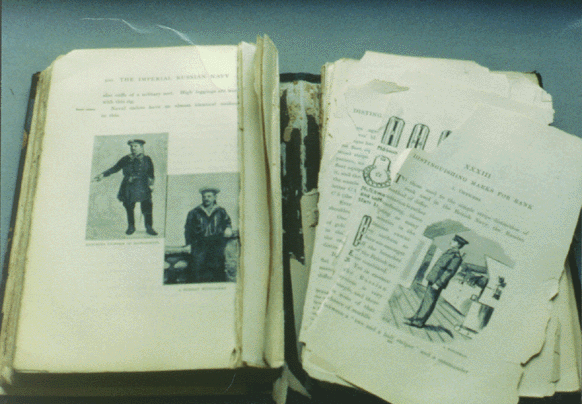
Brittle Books
This oft-reproduced image of a disintegrating C19 or early C20 book illustrates the most common effect of acids upon wood-pulp paper. The pages, which once could be folded in half across the binding without damage, now will break near the binding at the point where the page's weight is greater than the paper fibers' remaining strength can support. Typically, this leaves the reader with a sheaf of unbound pages flaking toward the middle from the inside and outside edges. Once a book is in this condition, not much can be done to save it though, if it is worth the effort, the pages may be digitally imaged. Less severely weakened books may be immersed in a deacidifying bath, but this only stops the embrittlement process--it cannot be reversed.

Many large libraries have a formal "Brittle Books Program" for identification and treatment or replacement of brittle volumes, and some have an official "Brittle Books Librarian" in charge of the process. Smaller libraries, like Goucher's Julia Rogers Library, depend on the Circulation Desk staff, researchers, and other library patrons to identify books at risk. Researchers and other patrons who encounter books whose pages are beginning to become brittle to the Circulation staff should bring them directly to the Circulation Desk if they are in the general collection, or to the Special Collections librarian if they are in the Rare Books collection.